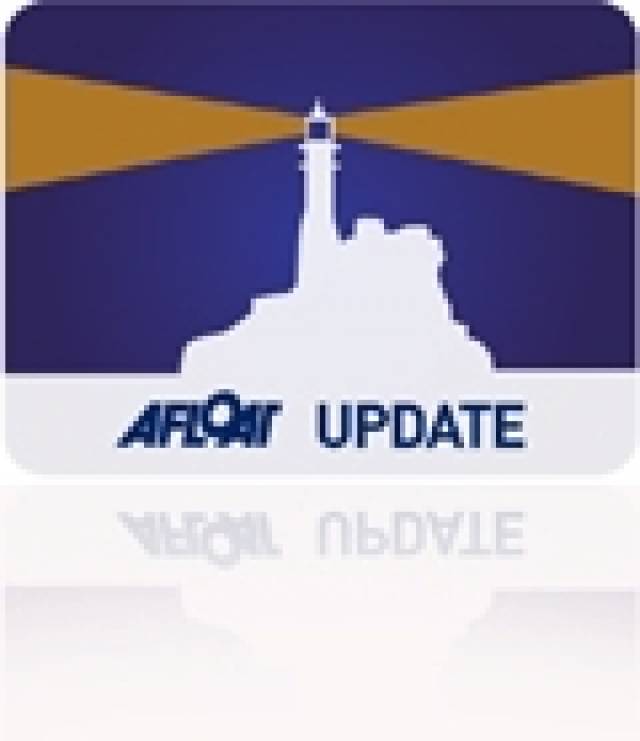#fastnet – Of the record breaking-sized fleet of 337 boats that set sail from the Solent last Sunday at the start of the Rolex Fastnet Race, the majority has now finished in Plymouth. Just 14 boats are still racing with the classic Fife gaff yawl, Duet, bringing up the rear, having only broken the '200 miles-to-go' barrier earlier this morning.
One of the latest arrivals this morning has been the Sigma 33c, Elmarleen, sailed by Will Sayer and Tim Paull. Significantly Sayer won the Two Handed class in the Rolex Fastnet Race two years ago aboard Elmarleen.
He had been hoping to repeat his success this year. Unfortunately conditions conspired against Elmarleen, as Sayer observes: "We have come in about six hours ahead of last time but this time we haven't done half as well. This year it was neither a big boat nor a little boat race - Class 2 and 3 have dominated."
The smallest, slowest boats in the fleet had to endure a very light first 48 hours. Sayer adds that they were unlucky after passing Portland Bill, when the bulk of the fleet managed to duck into Lyme Bay to get out of the worst of the foul tide, while Elmarleen had remained offshore.
While the Maxis were being becalmed off the Scilly Isles on the way back from the Fastnet Rock, the smaller boats suffered the same fate only with the return journey across the Celtic Sea still ahead of them. Sayer reckons it took them a whole day just to crawl from Land's End to the north of the Scillies. "We were lolloping around doing 2-3 knots, knowing that everyone else was in better wind ahead - it was very painful."
Finally the breeze filled in for Elmarleen on Tuesday afternoon. "It was fantastic to finally get going, but watching our average speed it was horrifying. At one point we were lying 255th and I was hoping to be in the top 5-10."
Thankfully from here, Sayer believes that they could not have sailed a quicker Rolex Fastnet Race, white sail reaching up to the Rock and back again and finally able to hoist the spinnaker from Bishop Rock on.
For the final run from Bishop Rock into the finish Elmarleen was flying. "Last night we were surfing at up to 11 knots - two handed in the dark. I am absolutely shattered, even though we got some sleep yesterday during the day knowing that we'd be putting up the big kite once we got to the Lizard."
Sayer was delighted to hear that the Rolex Fastnet Race overall had been won for the first time ever by a Two Handed crew, in Pascal and Alexis Loisin's Night And Day. "It's fantastic news for them."
Two-Handed racing continues to grow in the UK. This year there were 45 boats entered in the doublehanded class, compared to 36 last year, and this excludes the seven doublehanded IMOCA 60s and the nine Figaros.
It appears this is one area where British crews are holding their own. While overall under IRC there are French boats among the top 10 finishers (with Britain and Belgium on one apiece), in the Two Handed class, only four of the top 10 were French, with three British, two Dutch and one Spanish.
Figaro entente cordiale
This year the doublehanded Figaros were competing in their own class. This was won by the Anglo-French pairing of professional French sailor Charlie Dalin and Nikki Curwen, the latter of the Artemis Offshore Academy, enjoying her first proper Figaro race.
"It was really intense, very different from what I am used to - I think 1.8 miles was the furthest we got away from another boat in the class," enthused Curwen. "We could see someone the whole way round so we were constantly fighting for it.
"We had a much faster run to the Rock than most of the other boats. Then we had a tight reach in 25-26 knots all the way back from the traffic separation scheme (TSS) off the Scillies, with the big kite up. It was touch and go, edgy, with everything stacked up and pilot on and just played the sails."
While the Figaro turn-out was relatively small compared to the fleet sizes typically seen during Figaro races in France, there were some key players competing. In addition to the strong turn-out from the Artemis Offshore Academy, the line-up included Xavier Macaire, who finished second in this year's Solitaire du Figaro.
While Macaire and co-skipper Yves Ravot led for the first part of the race, Dalin and Curwen pulled ahead coming into the TSS to the south of the Fastnet Rock. From there on, the two boats match- raced around the remainder of the course with Dalin and Curwen always just a nose in front. They arrived into Plymouth yesterday morning, just 5 minutes 28 seconds ahead of the Artemis Offshore Academy's Ed Hill sailing with Figaro Race Director and former Mini Transat winner, Gilles Chiorri, with Ravot and Macaire third.
Curwen hopes victory in the Rolex Fastnet Race will help her raise the remaining funds to enable her to compete in the Mini Transat in October. In this she intends to follow in the footsteps of her father Simon, although she will have quite a job to keep up with her father's record: Simon Curwen finished second on the 2001 Mini Transat and is the highest ever British finisher.
































































